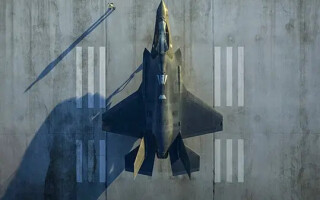Performance increases still needed for full adoption of mobile rugged computing for military use
StoryAugust 07, 2017
The constant drive forward in commercial technology is also driving military-computing technology to new heights. As this progress occurs, mobile computing is becoming more relevant to the warfighter, while at the same time posing huge challenges for designers and engineers. Even as engineers deal with shrinking size and weight requirements, performance is still a big issue that mobile computing doesn't quite answer for military use.
“Today’s soldiers and military personnel have device performance and operation expectations set by the latest tablet and smartphone devices,” says Steve Motter, vice president of business development at display provider IEE in Van Nuys, California. “Extremely high-resolution touchscreens (beyond full HD) are commonplace [in consumer applications], with interoperable applications, common user interfaces, and dependency on networked information”
These types of capabilities are what military users are looking for “in their rugged mobile devices,” Motter adds. “The innovations and advances achieved in the consumer space are tremendous; we should similarly enable and equip warfighters. We should build a framework [in the industry] that rewards invention.”
Commercial offerings are still beyond anything the warfighter can experience today, however. “Tablets continue to be constrained by battery power, thermal limitations, and an insatiable demand for more processing,” points out Jim Shaw, executive vice president of engineering at Crystal Group in Cedar Rapids, Iowa. With an increase in the use of smaller computing devices, and as more battlefield applications get deployed on tablet-like devices, Shaw says, “processing demand increases accordingly.”
At the core of what will drive the true adoption of mobile laptops and tablets in the field: raw performance capabilities. “The designer (and the customer that selects the appropriate device) is challenged to select a device with the maximum performance (processing speed, connectivity, display, and peripheral, etc.), while still low-power enough that the device will operate (in the rugged environment) long enough to achieve the mission parameters,” Motter explains. “There should also be adequate reserves to handle contingencies and unexpected emergencies, often encountered in the dynamic fielded operation.”
“While rugged tablets are becoming more and more powerful, they are of course still not able to process as much information as a traditional server (Intel Core CPUs versus Xeon, for example),” adds Aneesh Kothari, marketing manager at Systel in Sugar Land, Texas. “That being said, tablets are still able to perform many of the same tasks at a much lower price point. Between pricing and much smaller footprints, rugged mobile solutions are extremely attractive for the military.”
Traditional servers were not designed to run on batteries, explains Jason Wade, president of ZMicro in San Diego. In addition, “the power requirements or the power limitations aren’t an issue for servers so much, versus power requirements for mobile computing.”
The reason is simple: Soldiers in the field can only carry so much, therefore “extra batteries are generally not an option for those carrying laptops as batteries would take the place of water, food, or ammunition,” Shaw says. “This combination fuels the development of more efficient architectures, which benefits tablets, laptops, workstations, and servers alike.”
For companies like IEE, “network connectivity and video interfacing is key,” Motter says. “To achieve mobile embedded performance, we add direct silicon-based acceleration engines, whether it’s video decoding or video preprocessing/windowing. These hardware-based solutions allow for high-speed, low-latency performance without requiring extreme processing performance to support a software implementation.” (Figure 1.)
Figure 1: IEE’s 3.5-inch handheld control display unit (CDU) with embedded processor hardware implementation. Photo courtesy of IEE.
It is true that server and mobile computing technology is moving forward rapidly. “Mobile embedded computing is driving toward smaller, lighter-weight devices that are truly portable,” Motter says. “With most of the weight allocation given to the battery, the thermal design of the device depends on careful material selection. The enclosure requires a combination of molded lightweight materials and selective application with high thermal-conductive materials. Electrical shielding and EMI/EMC compliance remains a requirement, driving the designer to select deposition techniques for applying conductive materials within the housing.”
That still doesn’t change the reality that “the processing isn’t necessarily going to be taking place on the mobile-computing solution, just because there is such high-end, backend server processing that’s still required for collecting the data, analyzing the data, and distributing the data,” Wade clarifies. “I think it’s kind of a synergistic role between the two platforms, the mobile and the server platform. I think that as the power of mobile computing goes up, so will the backend processing that will feed that information out to the server. There’s a pretty dramatic difference.”
What end users are currently seeing is “several key manufacturers that are producing families of multicore processors around scaled performance; from the extreme low-power ARM processors, to midrange power Atom x86 devices, to the latest-generation i7 workhorses,” Motter explains. “In the rugged embedded space, there are wide-temperature-range, controlled- (lower) power variants of each of these that lend themselves nicely to rugged embedded mobile computing.”
Wade says he thinks that talking about mobile computing in the same terms as traditional servers is a little bit premature: The benefits that tablets and laptops bring to the warfighter are just out of reach, but, he says, “there’s no doubt that as the warfighter becomes more mobile and the capabilities of technology provide more information, that will bring the increase in the use of mobile computing in the field.”






